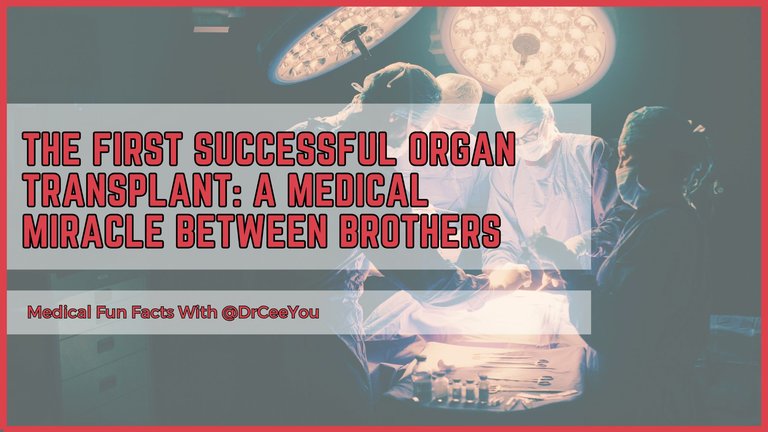
Organ transplants are lifesaving procedures that we often take for granted today.
Did you know?
The first successful organ transplant happened less than a century ago? Let’s rewind to December 23, 1954, when history was made at Peter Bent Brigham Hospital in Boston.
A Brother’s Gift
The groundbreaking surgery involved identical twin brothers, Ronald and Richard Herrick. Richard was suffering from end-stage kidney disease, and his only chance of survival was a kidney transplant. Luckily, Ronald was a perfect match—literally. Because they were identical twins, their genetic makeup was identical, eliminating the risk of organ rejection, a challenge that had plagued earlier attempts at transplantation.
The Doctor Who Made It Possible
Dr. Joseph E. Murray, the surgeon who led the team, faced an enormous challenge. At the time, modern immunosuppressive drugs (which prevent the body from rejecting a transplanted organ) didn’t exist. However, the unique circumstances of this case—the twins’ identical DNA—gave him and his team a rare opportunity to attempt the procedure without worrying about rejection.
A Pioneering Surgery
On that December day, Ronald donated one of his kidneys to Richard. The surgery was a success, and Richard’s body accepted the kidney. This was the first time an organ transplant had worked, and it proved that transplantation could be a viable treatment for organ failure.
Why This Surgery Mattered
This groundbreaking operation didn’t just save Richard’s life—it also paved the way for countless other transplants. Dr. Murray’s work inspired further research into organ transplantation and led to the development of immunosuppressive drugs, which now allow people to receive organs from non-identical donors.
A Legacy of Hope
Dr. Joseph E. Murray was awarded the Nobel Prize in Physiology or Medicine in 1990 for his pioneering work. Ronald’s selfless act of donating his kidney to his brother remains a testament to the power of love and family in medical history.
So, the next time you hear about an organ transplant, think back to that winter day in 1954 when two brothers and a brilliant surgeon changed the course of medicine forever. Isn’t it amazing what a combination of science and human compassion can achieve?